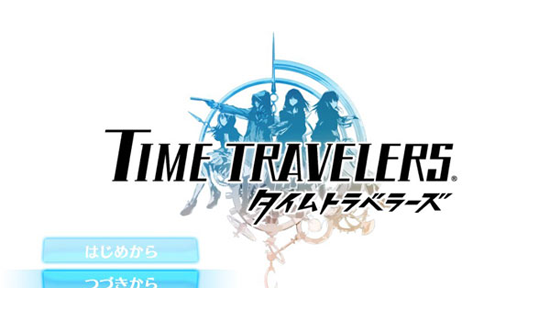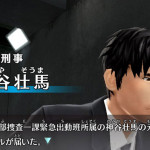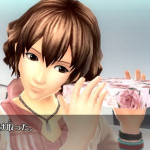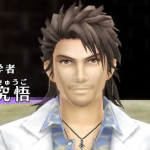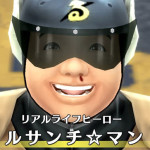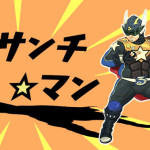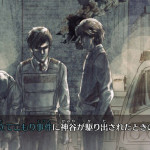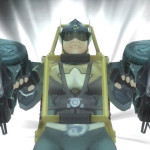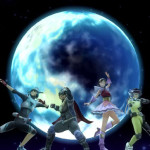The Visual Novel genre had seen a renaissance unlike any it had experienced in a long time by 2012. Japan had seen Visual Novels with incredibly high quality writing and sometimes interesting new game play mechanics such as “428 ~fuusa sareta Shibuya de~” (The “428” is actually pronounced as “Shibuya”), “Danganronpa”, “Stein’s Gate” and “Kyokugen Dasshutsu Ku Jikan Ku Nin Kyuu no Tobira” (“999: Nine Hours, Nine Persons, Nine Doors”) in recent years, so it’s only natural that the newest Visual Novel from Level-5, “Time Travelers”, could potentially be the next title to continue the cycle. But its success was not necessarily probable due to it being published and developed by Level-5 (who by this point had certainly had their share of successes, but also plenty of failures), but instead because of the staff involved in its creation.
The Director: Jiro Ishii. He cut his Visual Novel teeth on some of the famed Kamaitachi no Yoru games, but really proved himself as the director of the aforementioned hit 428 (Originally released on the Wii, later ported to the PS3 and PSP). It sold incredibly well for a Visual Novel, and was widely renowned for its interesting story. The Scenario Writer: Yukinori Kitajima. By this point he had written scenarios for a ton of different games, but most recently had been involved with 999. The Composer: Hideki Sakamoto. Sakamoto composed for various entries in the Ryuu ga Gotoku (Yakuza) series, Pokemon Fushigi no Dungeon (Mystery Dungeon) series and Aquanaut’s Holiday among many others. What did these three gentlemen have in common? Well they were the Director, Scenario Writer and Composer for 428. That’s right, the old team was brought back together again. And to top it off, Time Travelers even takes place in the same world as 428, just twenty years later in the timeline. As I had mentioned, 428 sold very well. So bringing its three key players together for another game was certainly in Time Travelers’ favor.
The basic story goes something like this: In April 2013 a huge hole suddenly opened in the sky above Tokyo. Tokyo suffered severe damage immediately after this phenomenon, dubbed the “Lost Hole”. Eighteen years later, in April of 2031, Tokyo has managed to recovery at a miraculous speed. At 2 PM, Detective Souma Kamiya is running all over Shibuya, following instructions from a mysterious person who has kidnapped his wife and son. At the same time, “TV Five” announcer Hina Fushimi was worrying about the fate of her job. The story begins from here…
But even though the setting is still Shibuya, what sets Time Travelers apart from 428? While 428 features still photos as its primary visual presentation, Time Travelers actually took things further and used full 3D animation. Instead of following the path of the typical Visual Novel, which is branch-based progression through the story, Time Travelers featured a somewhat more interactive element called “Playing Cinema Events”. It turns out that this is just a fancy name for Quick Time Events! That’s right, it’s just good old fashioned pushing of specific buttons when prompted to, at various points throughout the story. While it sounds extremely ridiculous to call this a new addition to any game, Visual Novels usually don’t feature any sort of interactivity beyond making decisions that impact which way the story goes.
Time Travelers certainly shares many more direct similarities with 428 than it does differences, but this isn’t a bad thing. It features five different scenarios, each with a different main character(s), that all end up tying into one another via a timeline chart. Sometimes a decision made in one scenario, or just the progression of the scenario in general, will halt another scenario. So in order to continue on, you’ll need to “go back in time” to a previous chapter of another scenario to resolve the situation. This lends an interesting puzzle element to the progression of the story, and is implemented in much the same way that the same system was in 428.
There are also a few links to 428 and other visual novels in the story. A costume of the character of Tama from 428 appears in a few scenes throughout Time Travelers. Wandaba from Level-5’s “Inazuma Eleven Go – Kuro no Stone” game appears on the front side of a bus during a bus jacking scene, and Monokuma of Chunsoft’s “Danganronpa” fame appears in various spots throughout the game as a plush toy. Visual novels aside, this game is also full of other various pop culture references (particularly to popular American science fiction). The two that stick out more than others are Aliens (see Rusanchi Man in Ripley’s power loader above), and a handful of Back to the Future references (see a couple of them below), up to and including a DeLorean!
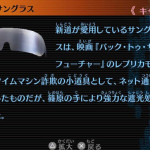 | 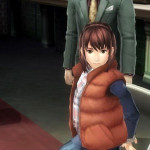 |
| Back to the Future fans won’t be disappointed with the references either: Replica Marty McFly sunglasses! | Also Mikoto wears Marty’s down vest throughout the game! |
Originally announced in 2010 for the 3DS, and then re-announced in 2011 for Vita and PSP as well, Time Travelers visuals were obviously scaled down to accommodate for the lower end of its hardware platforms (PSP and 3DS). I played the Vita version, so I couldn’t help but notice. That isn’t to say that it wasn’t a fine looking game, but where it really shined was in its music and voice acting. Music has always been an incredibly important part of the Visual Novel, and Sakamoto’s compositions don’t disappoint. The voice cast is also of a high caliber, featuring such VAs as Atsushi Miyauchi (Eden of the East), Hiroaki Hirata (One Piece) and Miyuki Sawashiro (Rozen Maiden).
Time Travelers may not have sold as many copies as Level-5 would have liked, but that doesn’t mean it isn’t a very good game with great writing and production values for its genre. It would certainly be just as enjoyable for those familiar with the Japanese Visual Novel, or those looking to get into the genre for the first time. Unless there is a very good English language walk through out there though, the level of Japanese required to play Time Travelers and digest the story probably sits somewhere at a higher-intermediate level. The dialog can get a little “science-y science” every now and then, but it isn’t anything that anyone with a decent Japanese vocabulary shouldn’t be able to get through.
